
Attending the meeting were leaders of the Ministries of National Defense, Public Security, Agriculture and Environment, Construction, Industry and Trade; Chairmen of the People's Committees of the provinces and cities of Quang Tri, Hue, Da Nang, Quang Ngai, Gia Lai, Dak Lak, Khanh Hoa; and the Office of the National Civil Defense Steering Committee.
Previously, on November 5, Deputy Prime Minister Tran Hong Ha issued Official Dispatch No. 209/CD-TTg, following Official Dispatch No. 208/CD-TTg dated November 4, requesting the Chairman of the People's Committee of the province and city - Head of the Provincial Civil Defense Command to direct the review, development, completion and approval of the response plan to storm No. 13 in the area, in which specific natural disaster and incident situations that may occur, key vulnerable areas, key tasks, on that basis assign specific tasks to the Deputy Heads and each member of the Civil Defense Command, and at the same time proactively coordinate with the Military Command and the Provincial and City Police to arrange forces, vehicles, supplies, equipment, food and necessary necessities to be on standby in all key areas to be ready to deploy when bad situations occur.
Deputy Prime Minister Tran Hong Ha inspects storm prevention work at Quy Nhon fishing port
In cases beyond the capacity of the locality, proactively report and request the Command of Military Region 4, Military Region 5, and the Office of the National Civil Defense Steering Committee to promptly mobilize support in accordance with regulations.

The Civil Defense Commands of the above provinces and cities shall complete the response plan for storm No. 13 and send the plan approved by the Chairman of the People's Committee - Head of the Provincial Civil Defense Command to the Prime Minister before 11:00 a.m. on November 6.
The Deputy Prime Minister assigned the Ministry of Agriculture and Environment, the Ministry of National Defense, and the Ministry of Construction to be the heads of the delegation to directly urge, guide, and coordinate with localities in implementing response work to storm No. 13. Specifically: the Ministry of National Defense went to Quang Ngai province, the Ministry of Agriculture and Environment went to Gia Lai province, and the Ministry of Construction went to Dak Lak province.
At 10am on November 6, the eye of the storm was about 270km east-southeast of Quy Nhon (Gia Lai). From this morning to this afternoon is the time when the storm is at its strongest, level 14-15, gusting over level 17.
Around this evening to tonight (November 6), the storm center will move into the mainland of provinces from Quang Ngai to Gia Lai.

In which, the eastern area of Gia Lai and Quang Ngai provinces is the area most directly and strongly affected by storm No. 13 in terms of wind, with wind level up to level 10-13, gusting to level 15-16, this wind force can completely destroy level 4 houses, non-solid houses; the western area of the above provinces will also be affected by strong winds of level 6-7, the area near the storm center will be level 8-9, gusting to level 11.
The strongest wind time is from about 5pm on November 6 to 4am on November 7.
The area from South Quang Tri to the north of Da Nang city and the north of Khanh Hoa province has strong winds of level 6-7, gusting to level 8-9.

Regarding the impact of strong winds at sea, the sea area from South Quang Tri to Khanh Hoa (including Ly Son special zone, Cu Lao Cham island) will have winds gradually increasing to level 6-7, then increasing to level 8-11, waves 3.0-6.0m high; the area near the storm center will have strong winds of level 12-14, gusts of level 17, waves 7.0-9.0m high; the sea will be very rough.
Coastal areas of Quang Ngai, Gia Lai, and Dak Lak should be on guard against strong winds of level 12-14, gusting to level 17, and waves of 5-7m high. Extremely dangerous for boats, aquaculture cages, and offshore structures.
Regarding the impact of strong winds on land, Dak Lak province, from the afternoon of November 6, the coastal mainland of the typical communes/wards: Tuy Hoa, Dong Hoa, Son Hoa, Song Hinh, Song Cau, Tuy An, Dong Xuan had strong winds of level 5-6, then gradually increasing to level 8-10, gusting to level 10-13; deep inland including communes/wards from M'Drak to Ea Sup had winds of level 5-6, gusting to level 7-8.
Ships anchor to avoid storms
Gia Lai province has 13 wards/communes that need special attention: Phu My commune, An Luong commune, De Gi commune, Binh Duong commune, Phu My Tay commune, Phu My Bac commune, Phu My Dong commune, Bong Son ward, Hoai Nhon Bac ward, Hoai Nhon ward, Hoai Nhon Dong ward, Tam Quan ward, Hoai Nhon Tay ward; strong winds level 11-13, gusts level 15-16.
Quang Ngai province has 7 wards/communes: Sa Huynh ward, Khanh Cuong ward, Duc Pho ward, Dang Thuy Tram commune; Tra Cau ward, Nguyen Nghiem commune, Lam Phong commune. Strong winds of level 10-12, gusts of level 14-15. The remaining communes/wards have strong winds of level 7-9, gusts of level 10-12.
Regarding heavy rain, from November 6-7, the area from Da Nang City to Dak Lak will have very heavy rain with common rainfall of 200-400 mm/period, locally over 600 mm/period; the area from South Quang Tri to Hue City, Khanh Hoa and Lam Dong will have heavy rain with common rainfall of 150-300 mm/period, locally over 450 mm/period. Heavy rain will mainly concentrate from the evening of November 6 to noon of November 7. From November 8, heavy rain in the above areas will tend to decrease.
In the next 24 hours, flood on Kien Giang river will rise again and be at level 2; flood on Bo river will fluctuate above level 2; Huong river and Vu Gia-Thu Bon river will fluctuate at level 1-2.
From the evening of November 6-9, there is a possibility of a flood occurring on rivers from Quang Tri to Lam Dong. During this flood, the flood peak on Bo River, Huong River (Hue City); Vu Gia-Thu Bon River (Da Nang City); Tra Khuc River, Ve River, Se San River (Quang Ngai); Kon River (Gia Lai); Ba River, Ky Lo River, Srepok River (Dak Lak) will reach level BĐ2-BĐ3, some rivers will reach level BĐ3; other rivers in the Central region will be at level BĐ1-BĐ2.

The representative of the Ministry of National Defense said that the units strictly maintained the civil defense duty regime at all levels; ready forces and means to respond to and overcome the consequences of Storm No. 13 and the floods caused by the storm. The force includes 268,255 officers, soldiers and militia ( Military Region 4 has 117,860 people, Military Region 5 has 45,935 people); 6,273 vehicles. (cars: 3,755; special vehicles: 520; ships: 646; boats of all kinds: 1,790; airplanes: 6).
Military Regions 4, 5, 7: Strictly maintain civil defense duty at all levels, proactively monitor and grasp the developments of Storm No. 13; check, review, adjust and supplement plans and strategies; prepare forces, means, communications, food and necessities in key areas at high risk of floods, landslides, and isolated areas to promptly and effectively handle situations; establish working groups (Military Regions 4, 5, 7) to inspect the response to Storm No. 13 in key areas.
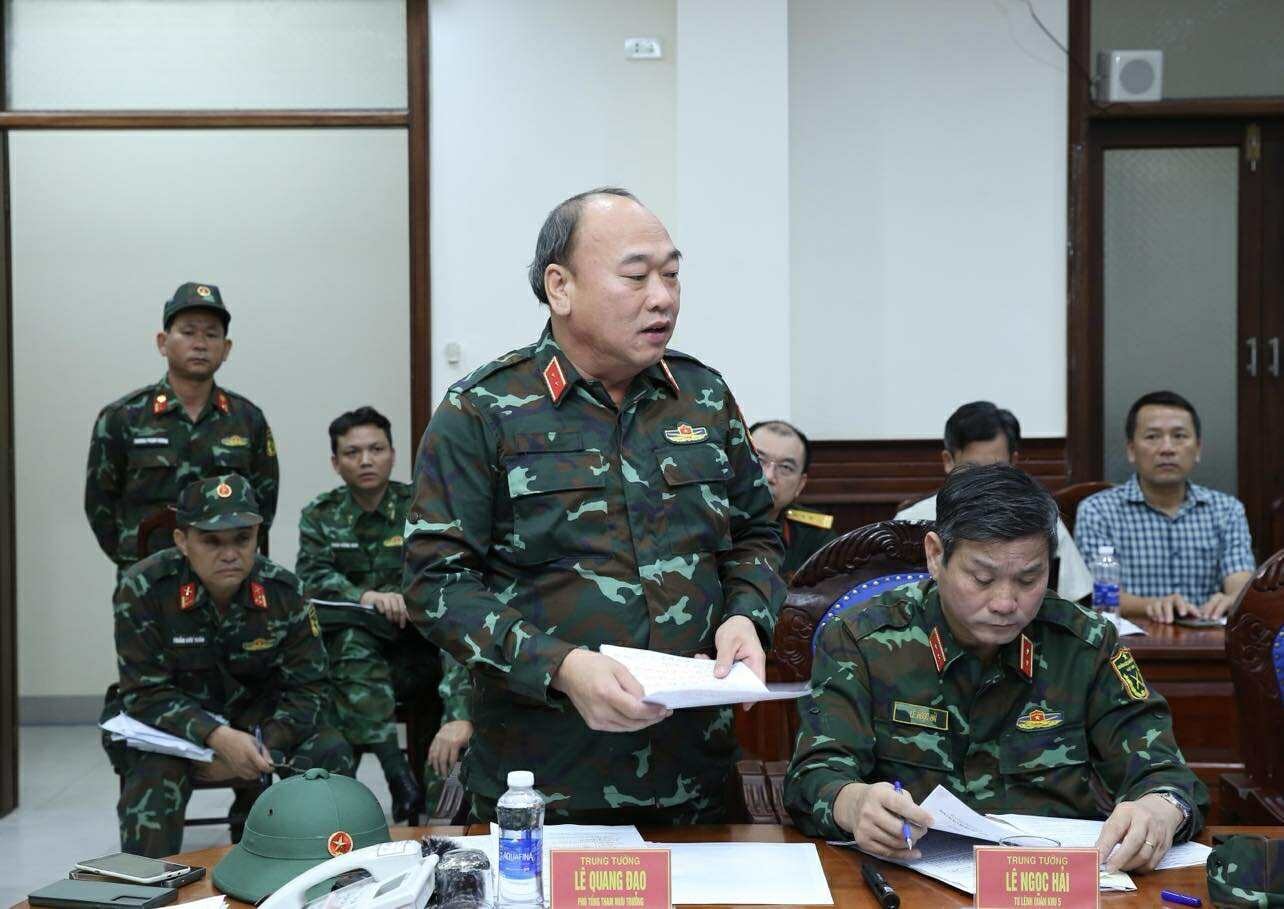
The Communications Corps and the Military Industry-Telecoms Group ensure timely and uninterrupted communications in all situations, serving the command and operation of the Government and the Prime Minister, especially in areas affected by floods, landslides, separation and isolation.
Air Defense - Air Force, Corps 18: Ready to mobilize helicopters for search and rescue and transport food and necessities to isolated areas.
The Border Guard force coordinated to notify, count, and guide 61,475 vehicles and 291,384 people to move around and escape the dangerous area.

Chairman of Gia Lai Provincial People's Committee Pham Anh Tuan said that on Sunday afternoon (November 3), the province held an urgent meeting of the Civil Defense Command to deploy responses to storm No. 13. Based on the assessment that this is a very strong storm, Gia Lai immediately activated the disaster risk response scenario at level 5 for the eastern area of the province (including 58 communes and wards), and at the same time applied level 4 for the western area bordering Binh Dinh, especially the areas of An Khe, Kong Chro and Ayun Pa.
The province has established a forward command post in An Nhon, and at the same time established 14 working groups, assigning members of the Provincial Party Standing Committee and leaders of the Provincial People's Committee to be directly in charge of the area. From November 5, all forces were required to command on-site and not leave their positions until the storm dissipated.
Gia Lai has used a technology system to update response scenarios for each commune, helping localities proactively evacuate people and ensure safety in real time.
Regarding boats, the province has more than 5,700 vehicles, of which 4,600 ships have anchored safely at Quy Nhon, De Gi and Tam Quan ports; all ships still operating at sea have been moved out of the danger zone, determined not to let fishermen stay on board.
The province plans to evacuate about 100,000 households, equivalent to more than 330,000 people. By 9am this morning, about 75% of the plan had been reached, and it is striving to complete it before 7pm today. The concentrated evacuation will be arranged at safe locations, ensuring food for at least 2 days. For households that are relocated together, the province will support 50,000 VND/person/day and 20,000 VND/household/day for the family that receives the person.
Regarding production, the province has requested the completion of harvesting aquatic products and crops before November 6; construction projects have been temporarily suspended, construction equipment has been lowered and securely tied. Excavators and rescue equipment have been prepared at key traffic routes, especially An Khe Pass.
Regarding reservoirs, the province has released water early under the direction of the Ministry of Agriculture and Environment, ensuring flood capacity.
Gia Lai plans to ban all vehicles and people from the streets in the eastern part of the province from 6 p.m. today. At the same time, it has stockpiled food and provisions at areas at risk of being cut off, and mobilized police, military and militia forces to be on duty at key residential areas to provide timely and effective rescue on the spot.
Chairman of Hue City People's Committee Phan Thien Dinh said that, in the face of complicated developments of floods and the possibility of storm No. 13 causing impacts, the City has developed and activated response scenarios, focused on mobilizing and evacuating people in low-lying areas, riverside areas, areas at risk of landslides, and organized safe anchoring of boats. Food and food reserves have been fully deployed to proactively handle prolonged rains, ensuring no hunger or loss of life.
Deputy Prime Minister Tran Hong Ha assessed that although Hue is not in the current forecasted storm area, the flood situation in the area is still very complicated. Therefore, the province needs to continue to closely follow the forecast, continuously update the direction of the storm and the affected area, especially taking into account the scenario of the storm changing direction and directly impacting Hue. "This is a mandatory backup plan that must be taken into account in the direction and implementation at the local level," the Deputy Prime Minister emphasized.
In Da Nang, Chairman of the City People's Committee Pham Duc An said that a level 3 response scenario had been activated, prioritizing plans to combat prolonged heavy rains and flooding. All boats in the danger zone were taken to safe shelters. Residential areas at risk of landslides, flash floods, and deep flooding were evacuated before noon on November 5. The city has also prepared food, medicine, and on-site rescue forces.
For Dak Lak, the province has identified this as a particularly important task, establishing 3 steering groups in 3 key areas, directly commanded by the Chairman of the Provincial People's Committee. According to the plan, the evacuation of people in areas at risk of deep flooding and landslides must be completed before 12 noon on November 5, after which the forces will continue to check and review one last time before the storm hits. The province also said that only 3 ships are about 3 nautical miles from shore, expected to reach shore before 11 am, all other ships have anchored safely.
The Deputy Prime Minister specifically noted that for the former Phu Yen area, where there is a very large scale of aquaculture at sea, the province must strengthen close monitoring from now until 3 p.m., ensuring that absolutely no one remains on the rafts, even though the eye of the storm is forecast not to sweep directly through this area.

Chairman of Khanh Hoa Provincial People's Committee Nguyen Khac Toan reported that the province has activated a level 3 response plan, established 9 working groups and established 5 inspection teams ready to be on duty at key locations. The whole province currently has about 6,353 vessels, of which about 160 are operating offshore; the province requires all workers at sea to go ashore before 12 o'clock today.
Regarding aquaculture, Khanh Hoa manages 3,785 cages with more than 8,300 workers; localities have propagated and basically ensured that workers can get to shore safely. The agricultural sector has instructed early harvest of nearly 2,000 hectares of rice and 58 hectares of crops. The province has also reviewed 64 reservoirs, implemented plans to ensure dam safety and built evacuation scenarios, and stockpiled food and medicine to serve people after the storm.
The Deputy Prime Minister reminded Khanh Hoa to "thoroughly" fulfill its task of ensuring safety for seafood farming workers; and assigned the police and army to closely coordinate in evacuation, control and rescue at sea.

Quang Ngai reported that it had established four advance teams and five working groups to direct the response; coordinated with the military, police and departments and branches to inspect key areas. The province said that most ships had been called to safe shelters; nearly 200 ships outside the shelter area were currently being contacted and monitored.
Regarding irrigation and reservoirs, Quang Ngai has operated according to procedures to ensure safety; at the same time, it has built a response scenario for floods, landslides and flash floods. The evacuation of people is being carried out vigorously: at the time of reporting, about 35% of the population in dangerous areas had been evacuated, the province set a target of completing 100% before 13:00. Quang Ngai also immediately coordinated with the Central forces and the Ministry of Construction to mobilize means and equipment to support response in high-risk areas.
Deputy Minister of Construction Nguyen Xuan Sang reported on the Liberian-flagged ore carrier (large tonnage), which had previously encountered an accident, ran aground, and was then towed out but water entered the hold, causing the draft to increase. The authorities, including the National Oil Spill Response Center, maritime agencies, the Ministry of Construction, and local authorities, have coordinated to develop three response scenarios: from the situation of a weakened storm (mild impact) to the worst-case scenario of the ship sinking with an oil spill.
To proactively respond, the rapid response force has prepared vehicles, buoys, and equipment to respond to oil spills at nearby seaports; and at the same time, developed an action plan immediately after the storm passes. The Ministry of Construction and the Response Center believe that the risk of oil spills is real, so units need to make oil spill response plans one of the key tasks.
The Deputy Prime Minister requested Quang Ngai and relevant agencies to develop a separate response plan for ship sinking and oil spill situations, and report in detail on the forces and means needed to be mobilized and the progress of implementation this afternoon.
Latest update, storm number 13 continues to strengthen, exceeding previous forecasts

Deputy Minister of Agriculture and Environment Nguyen Hoang Hiep said that according to the latest update, storm No. 13 continues to strengthen, showing no signs of weakening and is now stronger than previously forecast. This is considered the strongest storm to enter the region in many years. Localities have upgraded their response plans by one level, and must not be subjective in the face of the possibility that the storm will continue to increase its wind strength as it approaches the shore.
It is forecasted that from noon today, the coastal areas of Gia Lai and Quang Ngai will begin to have very heavy rain; by about 5 p.m., strong winds will gradually increase and from 7 p.m., there will be violent gusts of wind in a wide radius. The storm center is expected to make landfall from 8 p.m. to 9 p.m., mainly focusing on Quy Nhon, with the possibility of slightly shifting to the north. Notably, the peak intensity of 2.4 m coincides with strong winds and waves of 6-8 m high, which can cause sea levels to rise by about 1.5 m, deeply inundating many coastal areas and low-lying areas.
With wind speeds forecast to reach level 13, gusting to level 15-16, level 4 houses and houses with corrugated iron roofs will not be safe, even when they are reinforced. Therefore, localities must evacuate people from non-solid housing areas, to be completed before noon today; at the same time, stop all non-essential activities from 3pm and prohibit people from going out after 6pm, except for those on duty.
The Deputy Minister also said that, implementing the Government's direction, hydroelectric and irrigation reservoirs have discharged flood water early, increasing flood prevention capacity from 200 million m³ to 1.6 billion m³, creating favorable conditions to reduce flood peaks downstream, limiting the risk of prolonged deep flooding.

Concluding the meeting, Deputy Prime Minister Tran Hong Ha emphasized that storm No. 13 has developed very quickly and abnormally. In just three days, since its formation, the storm has increased from level 11 to level 15 at sea, with a wide range of influence within a radius of about 100 km. With this intensity and scale, when it makes landfall, the storm is likely to maintain wind speeds of level 12-13, gusting to level 14-15. Therefore, the Deputy Prime Minister requested maintaining the level 4 natural disaster risk warning, and not lowering the response level under any circumstances.
The Deputy Prime Minister assigned the hydrometeorological agency and the Ministry of Agriculture and Environment to continue to closely monitor, based on actual monitoring data from equipment, especially factors on temperature, pressure and strong wind areas, to update hourly forecasts. Forecast information must be clear by location, with the time of the strongest wind, high waves, high tides, flooded areas and the duration of strong winds, to serve accurate command; absolutely do not avoid, do not worry about errors, because this is the basis for making response decisions.
Deputy Prime Minister directs the assignment of authority and responsibility to coordinate forces.
Regarding the operational scenario, the Deputy Prime Minister requested that provinces and cities in the affected areas complete all preventive work before 1 p.m. From 6 p.m., areas in the eye of the storm or at risk of rising sea levels and major floods must take measures to limit people on the streets, organize fixed forces on duty, and only allow functional forces to operate. The most dangerous time will last from 8 p.m. today to 8 a.m. tomorrow (plus/minus 2 hours); during this period, forces must not leave their command and rescue positions.
The Deputy Prime Minister noted that localities must thoroughly evacuate people living in unsafe level 4 houses and coastal areas, where there is a risk of deep flooding, landslides, and flash floods; pay special attention to the situation of fishermen staying on boats and sea cages, and request to resolutely force them to return to shore if necessary.
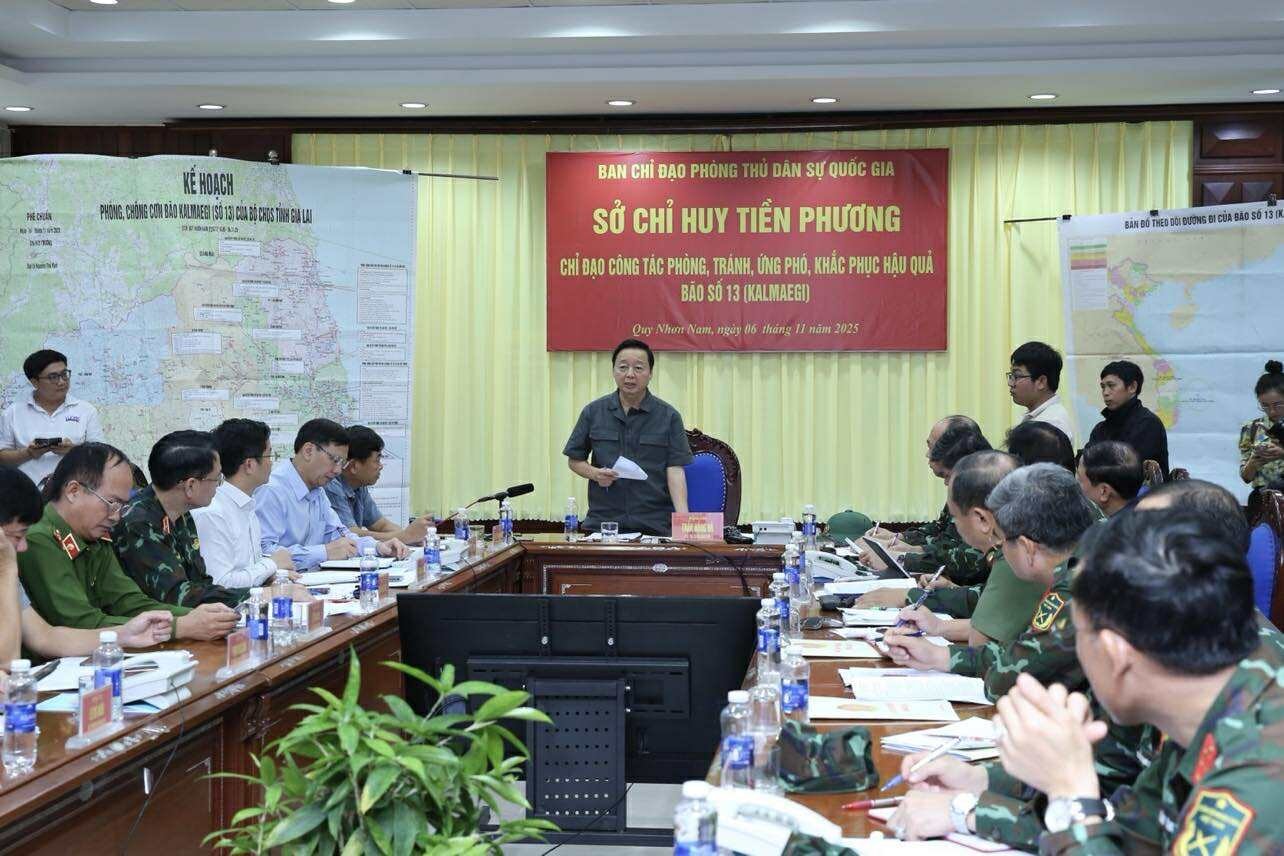
Regarding emergency preparedness, the Deputy Prime Minister requested military, police, and rescue units to maintain 24/7 combat duty, ensuring uninterrupted communication, even in the event of a power outage lasting 8-12 hours. Localities need to prepare generators, backup batteries, lighting, and satellite communication equipment to ensure uninterrupted command.
Along with storm response, the Deputy Prime Minister requested to prioritize flood prevention after the storm, especially in basins with heavy rain over 100 mm, the flood is at alert level 2-3. The Chairman of the Provincial People's Committee is the one to decide when to regulate and cut floods at reservoirs, with the principle of putting people's safety first.
The Deputy Prime Minister suggested that immediately after the meeting, localities review and adjust response plans according to risk levels, clearly identify key areas, forces, and means, report and maintain 24/7 contact with the Forward Command Center and the National Civil Defense Steering Committee.
“From now until 8am tomorrow is the decisive moment. All forces must be on standby, all plans must be ready,” the Deputy Prime Minister emphasized.
The Deputy Prime Minister noted the need to pay attention to the issue of sick people, illnesses, and emergencies. Military hospitals, local hospitals, and commune health facilities must be mobilized and on duty 24/7. Localities need to focus on ensuring medicines, medical equipment, and medical forces are ready to respond immediately when situations arise, especially in areas at risk of being isolated.
Source: https://baolamdong.vn/ung-pho-khan-cap-voi-bao-so-13-moi-luc-luong-phai-truc-chien-moi-phuong-an-phai-san-sang-400748.html


![[Photo] Da Nang: Hundreds of people join hands to clean up a vital tourist route after storm No. 13](https://vphoto.vietnam.vn/thumb/1200x675/vietnam/resource/IMAGE/2025/11/07/1762491638903_image-3-1353-jpg.webp)

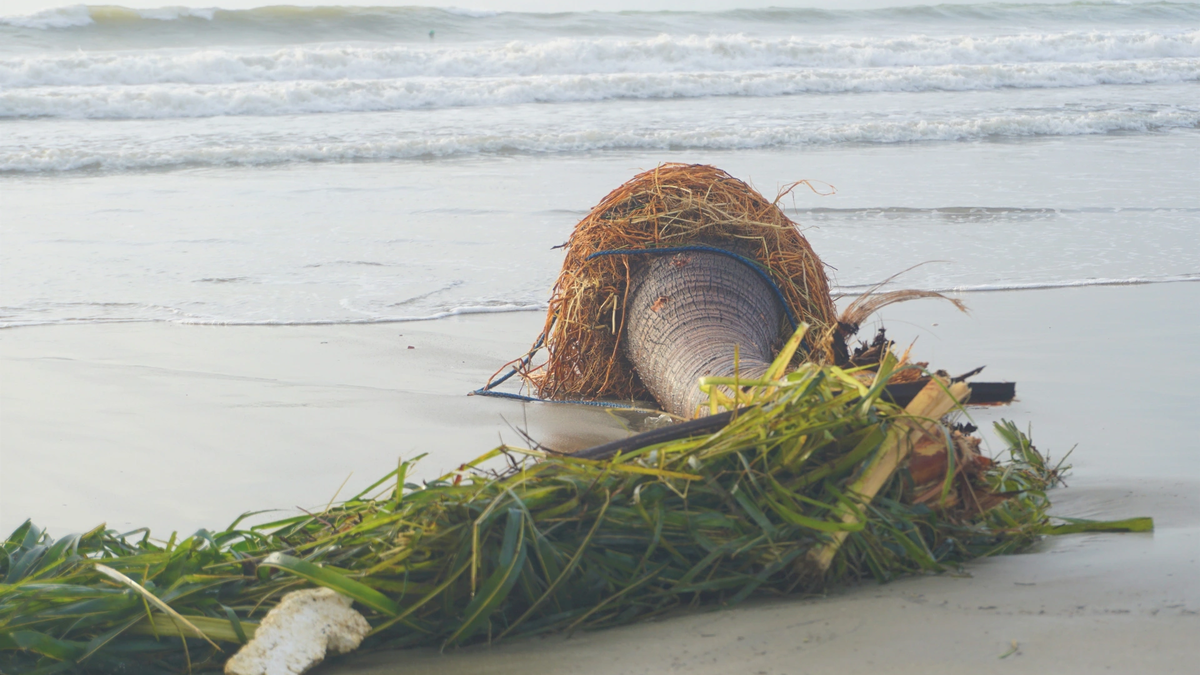



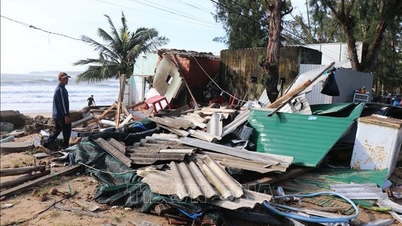

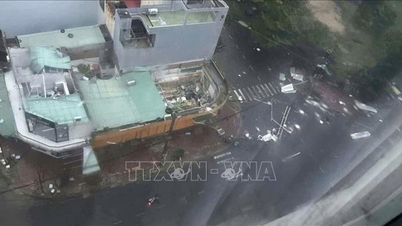



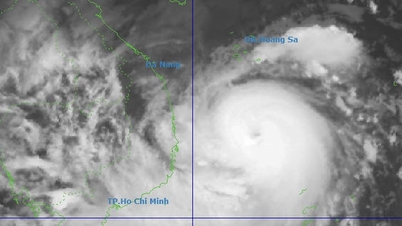


















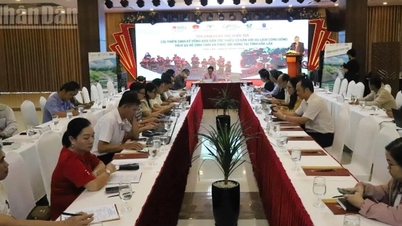

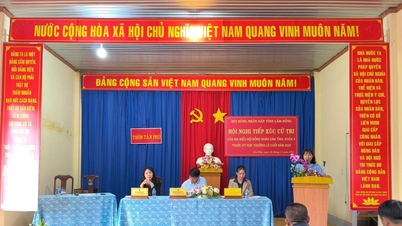
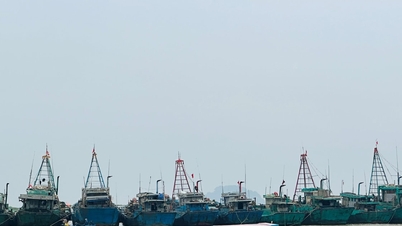











































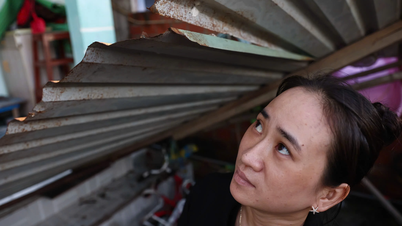










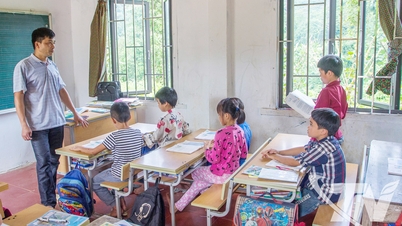

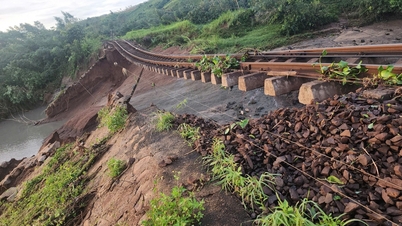


















Comment (0)